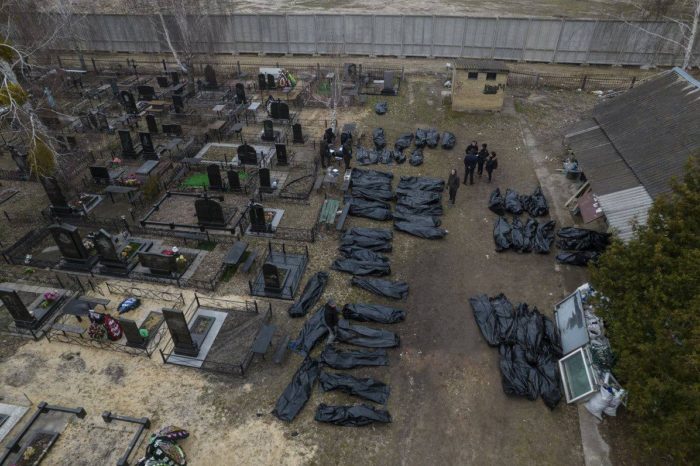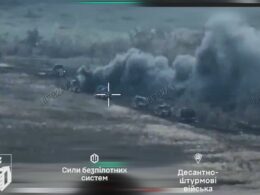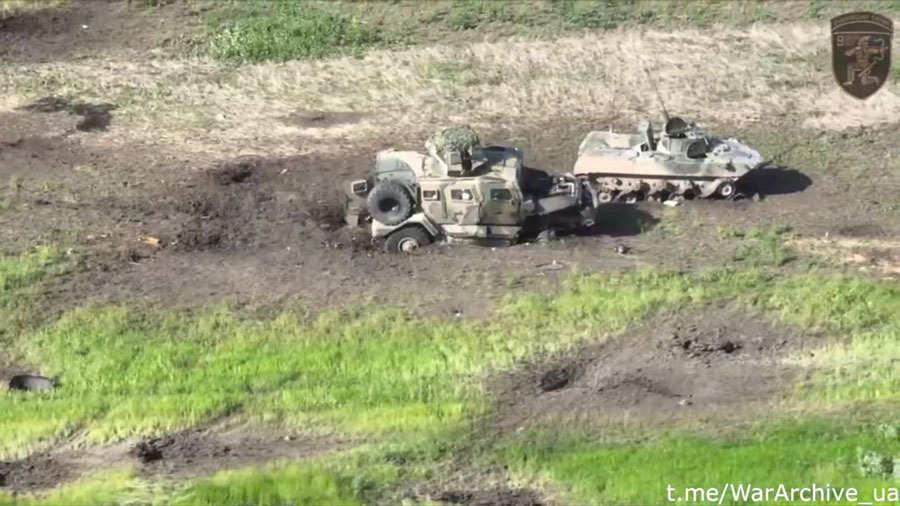Mass graves are being documented daily in Ukraine, both in the liberated villages of Kyiv and Chernihiv Oblasts and in the occupied settlements of Donetsk Oblast. Russian forces have killed thousands of Ukrainian civilians, sparking worldwide accusations that Moscow is committing war crimes - even genocide.
The barbarity is evident in towns and villages that were liberated by the Ukrainian army. Today, it is time for accountability as bodies continue to be discovered in some areas, exhumed and reburied in proper graves in other areas and documented via satellite imagery.
Mass burial site in occupied Stary Krym, Donetsk Oblast
A mass grave was identified on the outskirts of occupied Mariupol, providing further evidence of the scale of casualties in the southeastern region of Ukraine.
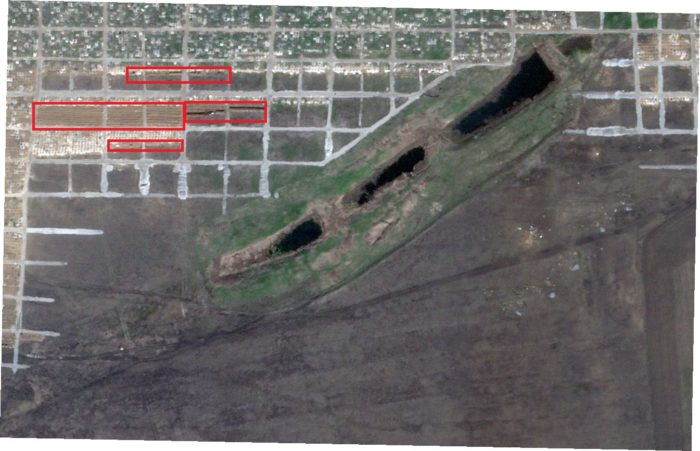
Vadym Boychenko, the mayor of Mariupol, reported that, thanks to satellite imagery, authorities had discovered yet another burial site in addition to the mass graves found in occupied Manhush and Vynohradne, Donetsk Oblast.
Boychenko said Planet Labs satellite imagery showed one excavated trench about 200m long and smaller ones in the Russian-occupied village of Stary Krym, just five kilometers from Mariupol. Stary Krym has been under Russian occupation since 10 March. The first trenches were discovered and excavated in Stary Krym on 24 March, after the village was occupied by the Russian military. Planet Labs first satellite imagery showed excavated trenches about 60-70 meters long.
Boychenko claims that the Russian military is purposefully transporting bodies of Mariupol civilians to Stary Krym and throwing them into mass graves. He says that thousands of civilians are buried there and that Russian troops are forcing residents to help with digging the graves in exchange for food.
“We know about these mass graves because these fascists – and I have no other words for them – involve the local population for burial. The villagers told us that they had to work hours for food, water… There’s not enough humanitarian aid coming into Mariupol, so people are forced to do so or starve.” Boychenko told Radio Liberty.
Mass graves in occupied Vynohradne, Donetsk Oblast
Satellite images show another mass grave near the cemetery of the occupied village of Vynohradne, located 5-6 kilometers from Mariupol.
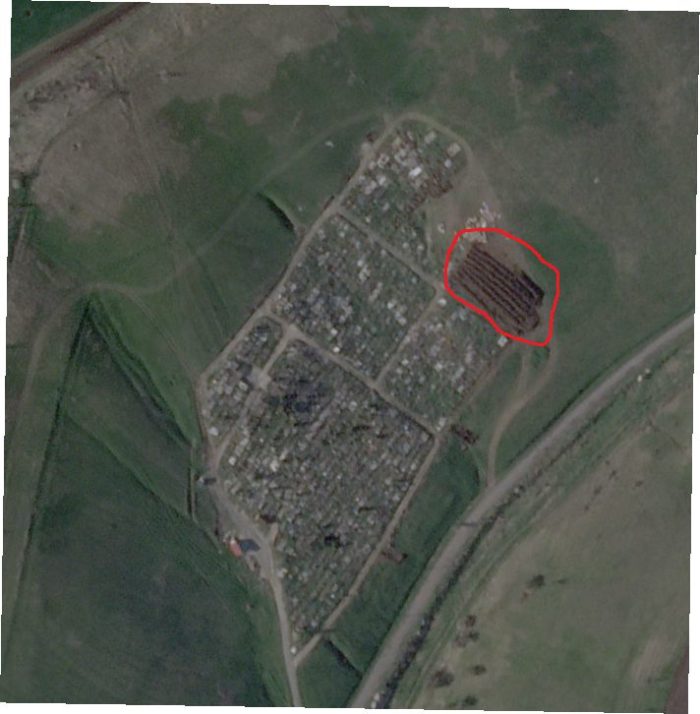
Mariupol authorities say they have received reports from residents about another possible mass grave in the village, which reportedly contains locals killed in daily shelling by the Russian army.
The trenches appeared in the Vynohradne cemetery in late March. Photos dated 17 March do not show any excavations; satellite images from 29 March show trenches measuring approximately 38 by 4 meters. .
On 20 April, Planet Labs published satellite images of a mass grave measuring 45 by 25 meters.
“After 20 March, when the Russian military began launching non-stop attacks on Mariupol, we didn’t have the means or manpower to remove the bodies from the streets.… The Russian invaders buried local residents wherever they could… and as quickly as possible, too.
According to preliminary data, over 20,000 locals have been killed in Mariupol,” said mayor Boychenko.
Occupied Manhush, Donetsk Oblast - mass graves and filtration camp
Late April, Ukrainian officials published more information about yet another grave site where Russian troops buried civilians from occupied Mariupol. The grave is located a few kilometres west of Mariupol, along the northwestern border of Manhush where Russian occupying forces also set up a so-called filtration camp. The Mariupol City Council claims it could be 20 times larger than the mass grave in Bucha and could hold up to 9,000 bodies.
According to Petro Andriushchenko, advisor to the mayor of Mariupol, aerial images revealed several lines of fresh mass graves, at least 30 meters long each, near the village of Manhush.
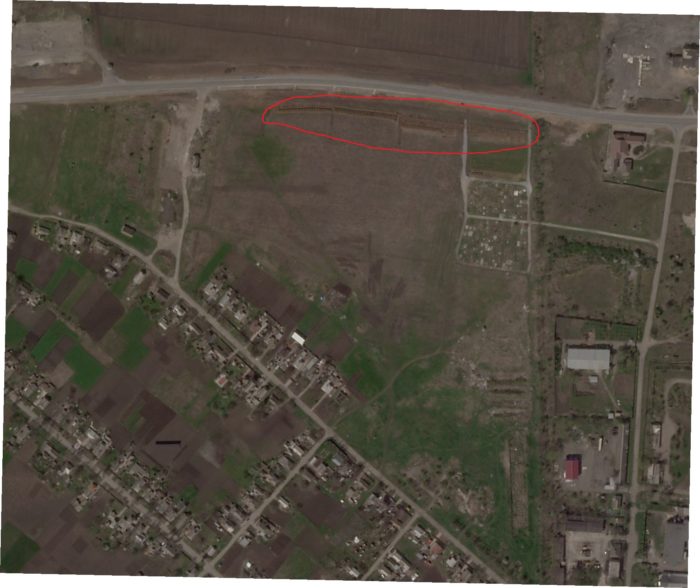
Andriushchenko says that this is “direct evidence of war crimes and an attempt to conceal them”.
In another location in Manhush, satellite imagery shows that the size of the mass grave has gradually expanded as Russian forces continue to transport bodies out of Mariupol. The grave is larger than three football fields, spanning approximately 340 meters in length.
“The occupiers dug new trenches and filled them with corpses every day throughout April. Our sources report that the bodies are placed in several layers.” reports the Mariupol City Council.
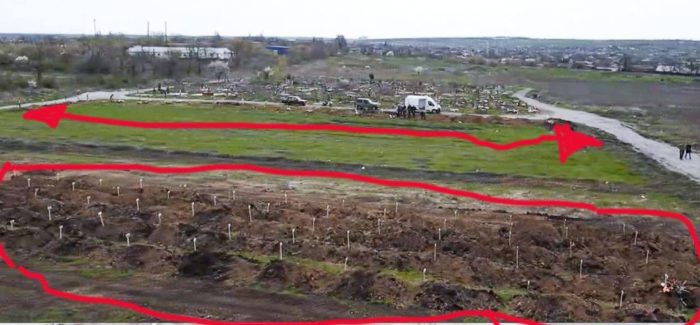
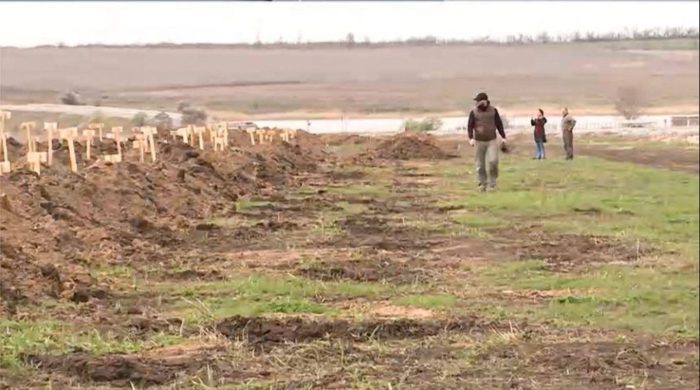
Mariupol’s mayor, Vadym Boychenko compared the Manhush grave sites to the massacre in Babyn Yar, where more than 30,000 Ukrainian Jews were executed over two days during World War II.
“The biggest war crime of the 21st century has been committed in Mariupol. This is a new Babyn Yar. Then, Hitler killed Jews, Roma and Slavs. And now Putin is destroying Ukrainians. He has already killed tens of thousands of civilians in Mariupol. There should be a strong reaction from the entire civilized world. Anything to stop this genocide,” said Mayor Vadym Boychenko.
Mass graves in Bucha, Hostomel, Irpin in Kyiv Oblast
The latest satellite images published by Planet Labs PBC on 4 April show the mass graves on the cemetary grounds of the Church of St. Andrew Pervozvanny in Bucha. The grave site has a trench approximately 14 meters long. Ukrainian forces say they discovered the bodies upon entering Bucha, a commuter town just 30 kilometers northwest of Kyiv, on 1 April after Russian units had withdrawn from the area.
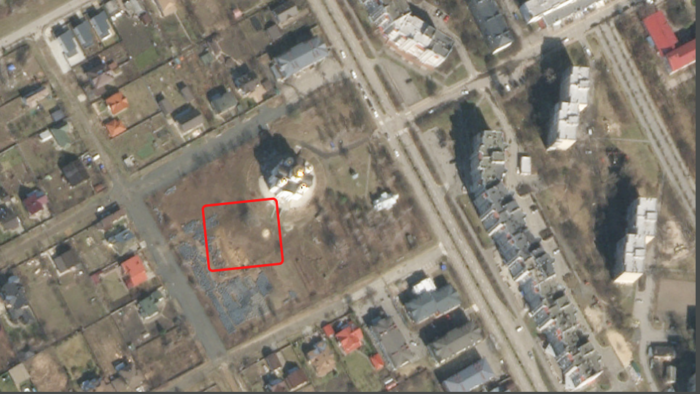
When questioned by foreign media, local residents and the Kyiv Regional Police said that close to 300 people were believed to be buried in the mass grave. Bucha Mayor Anatoliy Fedoruk reported that they found 280 bodies in one grave, while the streets of this once-peaceful town were littered with corpses.
“We found mass graves filled with bodies of murdered civilians. We found people with their hands and legs tied behind their backs and with bullet holes at the back of their heads. They were clearly ordinary civilians who’d been executed by the Russians. We found half-burned bodies as if somebody was trying to hide the crimes, but didn’t have enough time to do it properly,” stated Serhiy Nikiforov, spokesman for the President of Ukraine in an interview on 3 April.
The bodies were exhumed, laid out and inspected by forensic teams, including police officers.
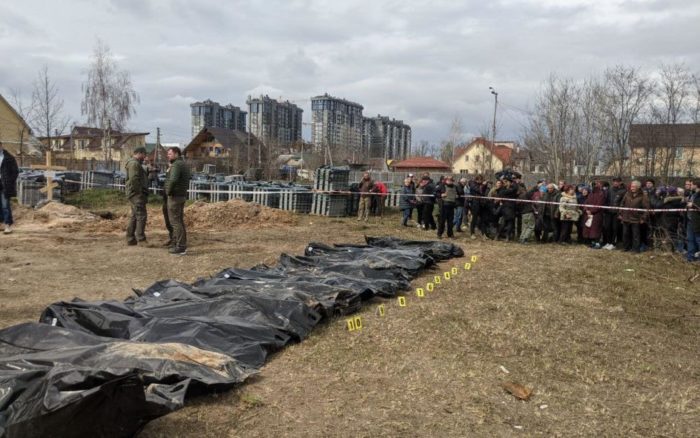
Kyiv regional police chief Andriy Niebytov said there were some 40 bodies in one grave, including two members of Ukraine’s military forces.
“These are war crimes. International law defines killing of civilians during any kind of military conflict as a war crime… These bodies will be delivered for the court investigation; they will undergo an autopsy and forensic medical examinations.” he said.
Niebytov added that in addition to the 40 bodies, more than 400 from the entire Kyiv Oblast had been taken to forensic institutions. Over 360 of them were from Bucha, Hostomel and Irpin. Many people were buried in gardens or on roadsides, because their relatives could not take them to the graveyards during the shelling.
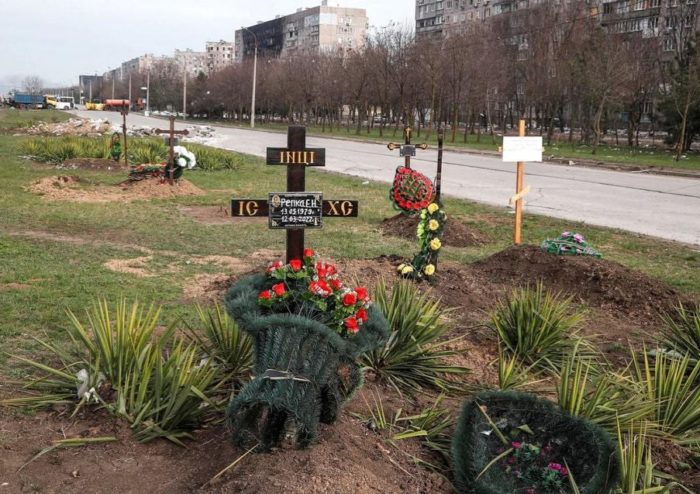
More mass graves documented in Mariupol
In early March, local authorities reported another mass grave near the Central Cemetery in occupied Mariupol, This was recently confirmed by Skhema journalists (Radio Svoboda), who analyzed the latest satellite images. Petro Andriushchenko also confirmed that the City Council had received information about the mass burials in the historic cemetery ‘Necropolis’.
Skhema journalists identified two trenches, one of which stretches 30 meters in length.
“Today, Mariupol and the surrounding areas are one big grave. 20,000 people have already died. More than 10,000 may die from disease, lack of water, food and medicine,” the Mariupol City Council said in a statement on 16 May.
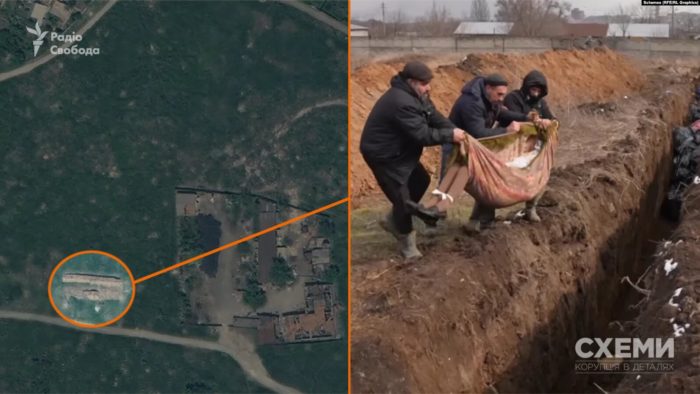
Skhemy journalists report that Russian occupation forces continue burying murdered civilians in Vynohradny and Stary Krym, so the grave sites continue to extend in size.
“The Russian occupiers are trying to hide their war crimes. They bury bodies in mass graves and use mobile crematoriums. We know that they need to conceal the bodies of over 20,000 murdered Mariupol residents. But, we continue to record these mass graves so that these crimes are duly documented and reported to relevant international organizations,” noted Mariupol Mayor Vadym Boychenko.
We shudder to think of what Ukrainian authorities will find once the Ukrainian army liberates all the regions currently under the control of the Russian forces.

